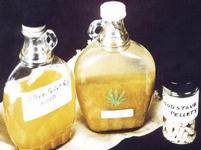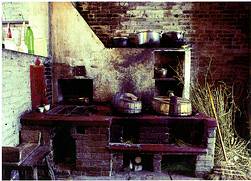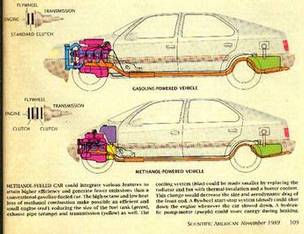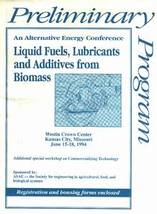 
USA ヘンプ・ミュージアム
 館長から皆さまへ
館長から皆さまへ ヘンプの歴史
ヘンプの歴史 ヘンプと農業
ヘンプと農業 ヘンプの医療と健康
ヘンプの医療と健康 ヘンプ食品
ヘンプ食品 ヘンプ織物
ヘンプ織物 ヘンプ縄と糸
ヘンプ縄と糸 ヘンプパルプ紙
ヘンプパルプ紙 ヘンプ建材
ヘンプ建材  ヘンプ燃料
ヘンプ燃料 ヘンプ・バイオマス燃料
ヘンプ・バイオマス燃料 バイオマス燃料 vs 化石燃料
バイオマス燃料 vs 化石燃料 エネルギー政策提言
エネルギー政策提言 書簡
書簡 関連図書
関連図書  ヘンプ原料
ヘンプ原料 ヘンプ溶剤
ヘンプ溶剤 ヘンプ・プラスチック
ヘンプ・プラスチック ヘンプと環境
ヘンプと環境 ヘンプと娯楽と精神世界
ヘンプと娯楽と精神世界 ヘンプと法律
ヘンプと法律 ヘンプと政治
ヘンプと政治 ヘンプ貢献者
ヘンプ貢献者 ミュージアム図書館
ミュージアム図書館 Topに戻る
Topに戻る |
|
"Anything that can be made from hydrocarbons (oil, coal, natural gas), can be made from carbohydrates (plant material)." - source unknown. HEMP BURNS AND THEREFORE PRODUCES ENERGY. The U.S.A. Hemp Museum has been interested in fuels and energy from its start in 1990. The curator spent many hours in the library of the California Energy Commission (C.E.C.) hoping to learn about biomass (plant matter) for fuels and energy. During the 1992 election campaign I wrote an article called A NATURAL ENERGY POLICY, which is included in this section.Among the things I learned from the C.E.C. was that Sacramento had a power plant not far from the Capitol built to burn biomass collected as waste tree, shrub, and grass trimmings. The plant was not in operation. As it was explained to me the green matter to be used as fuel was always too wet and irregular in composition to adequately fire the plant. California now has 33 biomass power plants in the state, operating mostly on forest logging waste. These power plants could burn year round with hemp for energy. Hemp will produce cleaner air and reduce greenhouse gases. When biomass fuel burns, it produces CO2 (the major cause of the greenhouse effect), the same as fossil fuel; but during the growth cycle of the plant, photosynthesis removes as much CO2 from the air as burning the biomass adds, so hemp actually cleans the atmosphere. After the first cycle there is no further loading to the atmosphere. At this time the U.S. has not signed an international treaty to reduce greenhouse gases to 1990 levels by the year 2000. Maybe the Bush administration [now Clinton] [now Bush] hasn't heard about hemp, maybe you should write him a short note before he leaves, mention time is important. When biomass (hemp) is used for other more permanent applications, say a library book that will last 1500 years, and then can be recycled seven times, or building materials in a home (I never thought what it might do to the price of a home), potential greenhouse carbon is tied up and does not go back into the atmosphere. AMAZINGLY, WITH HEMP, THE FOSSIL FUELS BURNED AND POLLUTING OUR ATMOSPHERE ARE AVAILABLE ONCE AGAIN AS A RESOURCE, UNTIL A FAVORABLE CO2 LEVEL IS REACHED.
Hemp in history was burned as oil in lamps for light. And is much less smelly than kerosene based lamp oil. Oil from hemp seeds can power existing diesel engines (see sample of bio-diesel below), with reduced sulfur and carbon monoxide emissions. Bio-mass (vegetation or plant matter) fuels such as methanol (wood alcohol) can power modified gasoline engines, or supply hydrogen for fuel cell applications. Twenty thousand methanol burning cars were tested in California on government and utility fleets. Seventy methanol pumps were installed around the state. Hemp stalks are the best biomass on the planet. And again because it is so important, bio-mass crops absorb carbon dioxide emitted by cars and power plants, mitigating the greenhouse effect.
http://hempmuseum.org/ |





